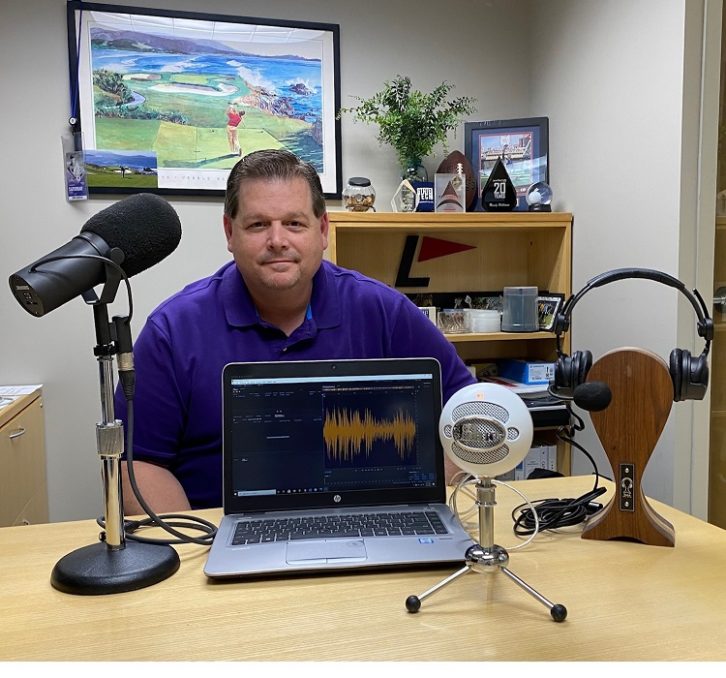What’s your favorite on-air mic and why? Which models do you turn to for remote work, newsgathering, live music?
June is Microphone Month at Radio World, so we have been asking a number of radio engineers, voice talent and other professionals to share their preferences along with any tips for getting the most out of microphones.
Several are below, followed by links to more.
Josh Rogosin

Broadcast/recording technician and technical director, NPR Music
As the audio engineer for the popular “Tiny Desk” program, Rogosin says Heil’s large-diaphragm dynamic PR 40 sounds great on a kick drum, with the PR 30 for guitar amps. He loves the Cole 4038 ribbon for brass and drum overheads.
“Nothing looks like Ear Trumpet Labs’ handmade mics. Nadine sounds great on upright bass, Delphina has a nice full sound for strings and vocals with a nice low end. I love how you can angle the Chantelle wherever you need to focus it.”
Rogosin says he “adores” the ICON Pro from Earthworks for his home setup. “It’s a condenser that’s amazing at off-axis rejection, ignores table thump as good as any dynamic I’ve used but sounds so much airier than an SM7B without being such a gain hog.”
The Shure Beta 57A is the best mic he’s heard under $140 and has a nice hot output for a dynamic. “Sounds great on everything.”

Rogosin says the Blue Hummingbird condenser mic is small, sounds great and the pivoting head makes it great in cramped spaces.
“The signature mic at the Tiny Desk is the Sennheiser MKH 418-S,” he concluded. “It’s crystal clear on vocals and the mid/side configuration is flexible enough to capture off-axis sources. I place it far enough away to see faces and avoid proximity effect and plosives.”
That said, he added, “Never underestimate the power of post-production to make or break a great sounding mic.”
David Antoine
Chief technology officer, WBGO Jazz 88.3 FM | Newark Public Radio.

Antoine likes working with quality large diaphragm condenser microphones such as the Neumann TLM103, which he compliments for its “very smooth sound” when paired with right processor, especially for jazz or classical commentary.
“For a microphone that won’t break the bank I also like Audio-Technica’s AT4040. This mic works very well with female voices.”
Out in the field, he turns to the Shure SM58. “There’s a reason most of Shures wireless mic offerings have SM58 heads.”
Antoine doesn’t think you have to drop big dollars to get quality sound.
“Take some time to talk into a mic, listen to how it sounds with your voice or the voice of a good announcer. You can find its sweet spot and the settings that are right for a particular microphone.”
Also, don’t over-process or over-EQ a quality microphone. “If a mic is well designed and well-made it will faithfully reproduce the source, whether it’s voice or an instrument.
“Distance from the sound source matters a lot. Not too close, not too far. Again, take some time with the microphone and you’ll get the desired result.”
Randy Williams
Chief engineer, Learfield | IMG College
Working for a major sports operation like Learfield | IMG College, Williams has experience with headsets, and for live play-by-play he favors the Sennheiser HMD-26 II headset, finding it “extremely durable, repairable, with replaceable parts, and great noise reduction in loud venues.”
His choice for studio recording is the Shure SM7B, for its “warm vocal reproduction, wide frequency response and great noise reduction outside the cardioid pickup pattern.

For home studio or podcasting setups, he recommends the Blue Yeti or Blue Snowball for their low cost, reproduction quality, multiple patterns and easy setup — “almost completely plug-and-play.”
Williams urges mic users to really know and understand the demands of a given venue or studio setup, in terms of noise, acoustics and size.
“Then have a strong understanding of the microphone capabilities and pickup patterns to maximize the quality of the vocal reproduction. Pop filters and windscreens can be lifesavers!”
Finally, he said, have a solid understanding of the difference between condenser and dynamic microphones and when to use each style.
 Martin Stabbert
Martin Stabbert
SVP/Engineering, Townsquare Media
For studio mics, and if cost isn’t a factor within reason, the Neumann BCM104 would be near the top of his list.
“To my ear, it offers a nice proximity boost but still maintains a pleasant spectral balance. The single-pattern design is also well-suited for most studio applications and the body doesn’t have any external switches to invite unauthorized adjustments.” It’s also easy to clean, which is more important than ever.
“That said, the real workhorse and one of the best values in the broadcast studio has to be the Heil PR-40. Its cardioid pattern and conventional, end-fire physical design and lack of switches makes it easy to use and difficult to misuse.”
He finds the frequency response of the PR-40 smooth and likes its high-end boost for a touch of brightness. “It is an excellent option for most applications and hard to beat from a cost/performance perspective.”
For remotes, basic PA or MOS interviews, the Shure SM58 and Sennheiser e835 are his staples. “Both are even available with an on/off switch for applications that might benefit from it. Simple, rugged, familiar to all and competitively priced.”
Stabbert’s favorite handheld for an interview that might end up on video is the Sennheiser MD46, with its camera-ready matte finish, low handling noise and suppression of wind and extraneous noises.
“The pattern is officially described as cardioid, but I think it behaves a little tighter than that. The extra length and weight can become a concern when adding on a wireless transmitter, but that would be the only potential issue worth noting.”
Read more of our coverage:
My Favorite Mics: Joan Baker, voice talent, author and coach
My Favorite Mics: Ira Wilner, Monadnock Broadcasting Group and Saga Communications of New England
Working With Mics: Rob Byers, Minnesota Public Radio/American Public Media







